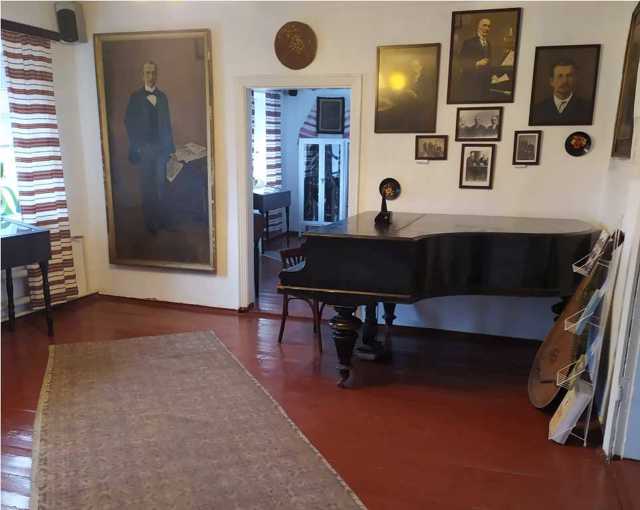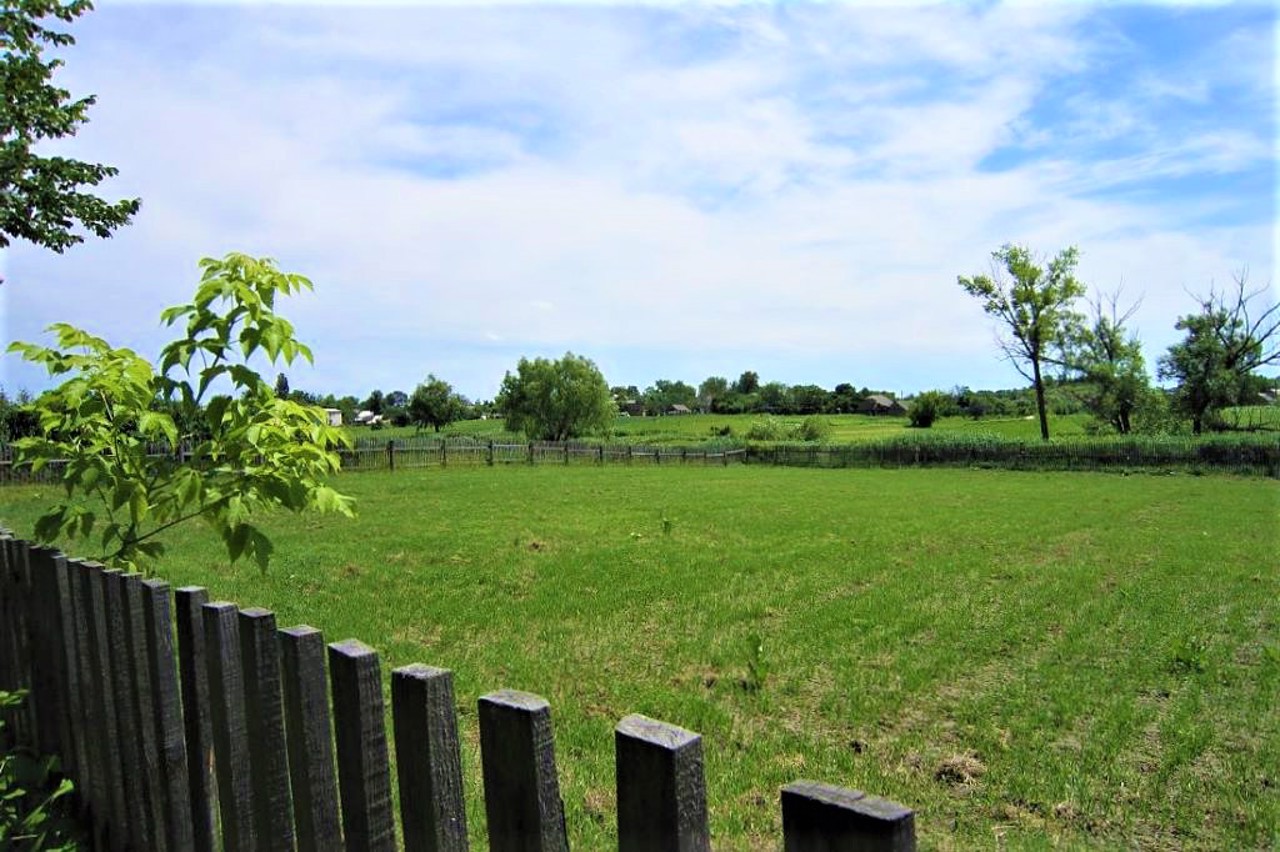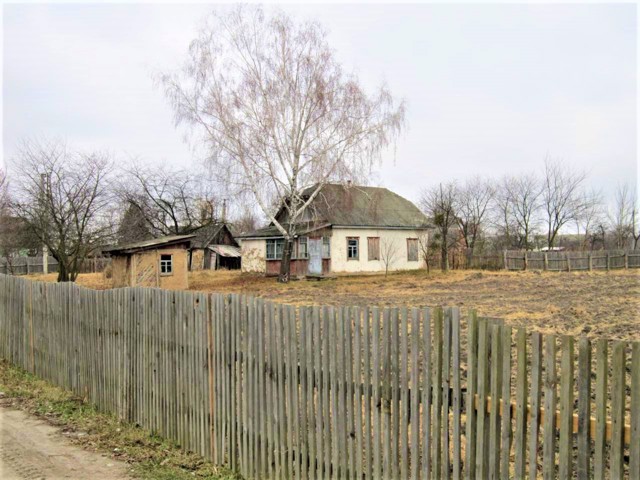Functional temporarily unavailable
General information about Vepryk
The village of Vepryk is located 5 kilometers west of Fastiv.
An ancient Scythian settlement (9th century BC - 4th century AD) has been preserved on the territory of the Mlynky hamlet.
For the first time in documents, the village is mentioned in 1455 as the village of Vepryn, gifted by the Kyiv prince Olelko Volodymyrovych to his friend Olekhno Sokhnovych among other estates on the banks of the Irpin River. The name is connected with the fact that in these places there were many boars, which were hunted by ancient Rus princes.
In 1856, the wooden church of Saint Paraskeva was built, the parish priest of which was the outstanding composer Kyrylo Stetsenko. He spent the last years of his life in Vep ...
The village of Vepryk is located 5 kilometers west of Fastiv.
An ancient Scythian settlement (9th century BC - 4th century AD) has been preserved on the territory of the Mlynky hamlet.
For the first time in documents, the village is mentioned in 1455 as the village of Vepryn, gifted by the Kyiv prince Olelko Volodymyrovych to his friend Olekhno Sokhnovych among other estates on the banks of the Irpin River. The name is connected with the fact that in these places there were many boars, which were hunted by ancient Rus princes.
In 1856, the wooden church of Saint Paraskeva was built, the parish priest of which was the outstanding composer Kyrylo Stetsenko. He spent the last years of his life in Vepryk - from 1920 to 1922. The Stetsenko Museum was opened in his estate.
Село Веприк розташоване в 5 кілометрах на захід від Фастова.
На території хутора Млинки збереглося давнє городище скіфських часів (IX сторіччя до нашої ери - IV сторіччя нашої ери).
Вперше в документах село згадується в 1455 році як селище Веприн, подароване київським князем Олельком Володимировичем своєму другові Олехну Сохновичу серед інших маєтностей на берегах Ірпеня. Назва пов'язана з тим, що в цих місцях водилося багато вепрів, на яких полювали давньоруські князі.
В 1856 році було побудовано дерев'яну церкву Святої Параскеви, парафіяльним священиком в якій служив видатний композитор Кирило Стеценко. У Веприку він провів останні роки свого життя - з 1920 по 1922 рік. В його садибі від ...
Село Веприк розташоване в 5 кілометрах на захід від Фастова.
На території хутора Млинки збереглося давнє городище скіфських часів (IX сторіччя до нашої ери - IV сторіччя нашої ери).
Вперше в документах село згадується в 1455 році як селище Веприн, подароване київським князем Олельком Володимировичем своєму другові Олехну Сохновичу серед інших маєтностей на берегах Ірпеня. Назва пов'язана з тим, що в цих місцях водилося багато вепрів, на яких полювали давньоруські князі.
В 1856 році було побудовано дерев'яну церкву Святої Параскеви, парафіяльним священиком в якій служив видатний композитор Кирило Стеценко. У Веприку він провів останні роки свого життя - з 1920 по 1922 рік. В його садибі відкрито музей Стеценка.
Сплануй своє перебування у Vepryk
What to see and where to go in Vepryk
Tourist attractions and museums of Vepryk

Kyrylo Stetsenko Memorial Museum
Palace / manor , Museum / gallery
The Memorial estate-museum of Kyrylo Stetsenko was opened in the village of Vepryk in the Fastiv region, where the composer spent the last years of his life - from 1920 to 1922.
Stetsenko, who turned to the church during the revolution, responded to the invitation of the community of Vepryk, which wanted to have a Ukrainian priest. In the village, the composer created two folk choirs: village and children's. In the spring of 1922, Kyrylo Stetsenko fell ill with typhus and died, just short of his 40th birthday. He was buried in Vepryk, the residents take care of his grave.
The museum stores the composer's belongings, a grand piano, as well as ethnographic and everyday items that help to recreate the environment in which Kyrylo Stetsenko lived and worked.

Khutir Mlynok
Archaeological site
Khutir Mlynok appeared near Vepryk in the 17th-18th centuries, when miller Demyan Tsukrenko built a water mill here on the Kyrsha River at its confluence with Irpin.
However, settlements in this place have existed since ancient times, starting with the Neolithic (XII-X centuries BC), as evidenced by archaeological findings. The fortifications of the later Scythian settlement of the VI-V centuries BC have been preserved. A rampart 1.5 kilometers long, 5 meters high, up to 25 meters wide with a 2-meter-deep moat protects an area of about 40 hectares. This is one of the largest Scythian settlements in Kevshchyna. In section, the shaft can be seen right at the entrance to the farm, next to the original wooden gate and watchtower.
A chapel of the Immaculate Image of Jesus Christ and Theodore Icon of the Mother of God was built on the bank of the reservoir.

Saint Paraskeva Church
Temple , Architecture
The wooden church of Saint Paraskeva in the village of Vepryk in the Fastiv region was founded in 1856.
The parish priest in this church in 1920-1922 was the prominent Ukrainian composer Kyrylo Stetsenko, who was invited by local residents to lead the local parish after he turned to the church at the end of his life.
During Soviet times, the church of Saint Paraskeva was destroyed. In the early 1990s, it was restored on the former foundation in its original form according to the surviving drawings.
Reviews Vepryk
Geographical information about Vepryk
| {{itemKey}} | {{itemValue}} |
|---|---|
| Region |
Kyiv |







